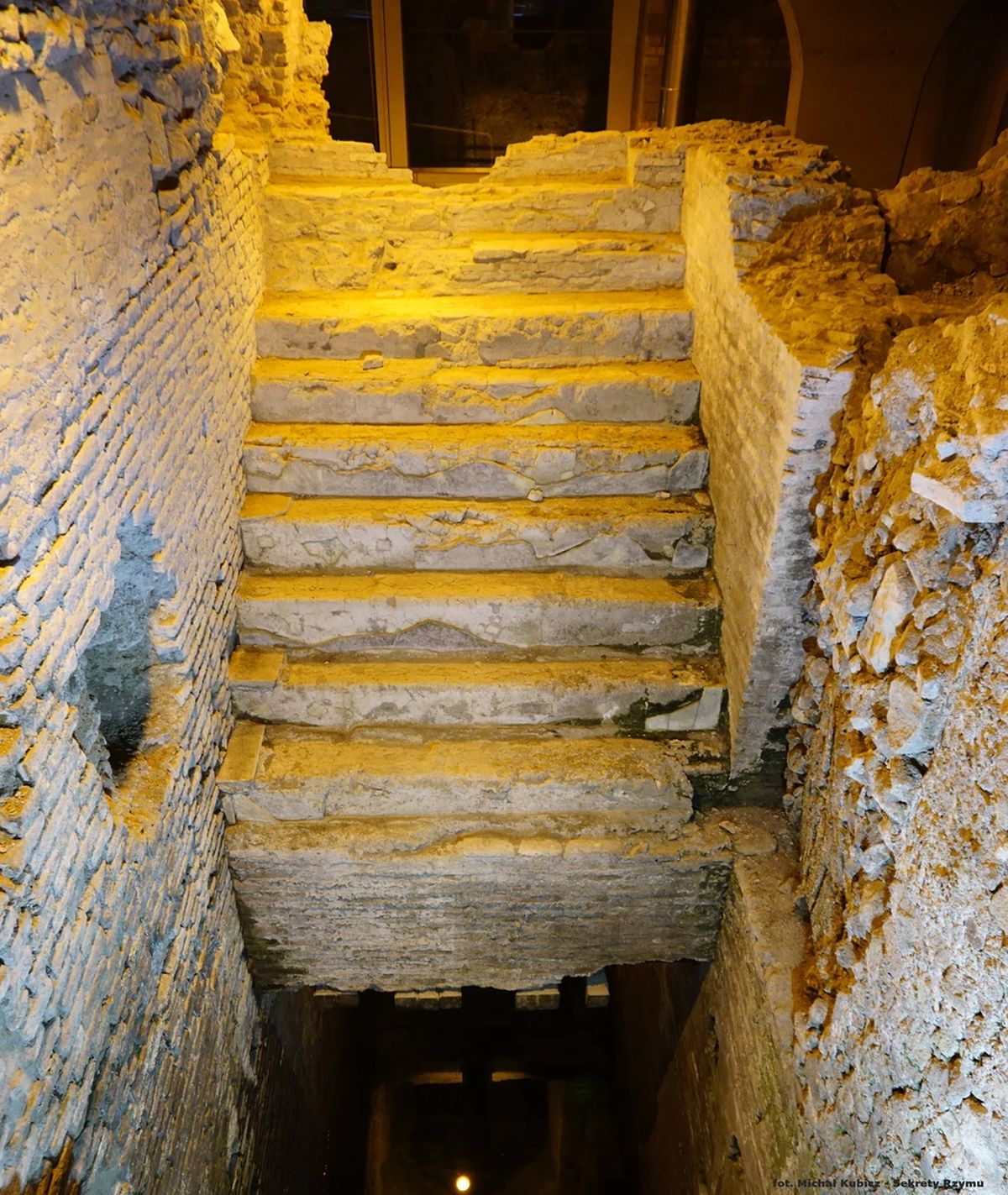When you walk around Rome, do you wonder what is hidden under your feet? Aren’t you curious how much of the ancient capital of the Empire has been preserved in its medieval Renaissance and Baroque walls?
Probably every visitor to Rome first looks for relics of monumental buildings from the imperial era – palaces, temples, forums, basilicas, etc.
The Rome of the “ordinary” ancient man is much less spectacular. Few traces of the houses, workshops, warehouses, countless taverns and brothels are visible today. But under the sidewalks, under the asphalt and under the buildings that constitute Rome today, there are countless remains of places where ancient Romans lived. Mostly, these fragments of the past are hidden from us – in modern basements, in foundations, in apartments – hidden by layers of history: earth, stones, bricks, plaster and paint. Although hidden, they still exist… And sometimes construction and archaeological works allow us to peel off countless layers of later accretions, giving us a chance to have direct contact with the ancient Rome of the grey man. An example is the archaeological site called Vicus Caprarius at the modern Vicolo del Puttarello, right next to the Trevi Fountain.
This place is like a keyhole – we cannot see the entire ancient buildings of the Roman Campus Martius in all their glory, but we can take a look at a small fragment of it. The ancient Vicus Caprarius buildings are located entirely two floors below the modern ground level (this is how much the street level has risen over 2,000 years…). Here we have a fascinating cross-section of the history of Rome: from the development of the early empire to the Middle Ages. Archaeological research shows that the oldest layer is a residential insula from the times of Nero. It is interesting because it is one of the buildings that Nero ordered to be built after the great fire in Rome in 64 CE, and which Suetonius mentions. They were supposed to be more solid buildings and built to higher standards than the previous ones. This is one of the few examples of a preserved insula from that time. Later, the insula was replaced by an elegant domus, which is reflected in the remains of a “high-end” finish. At some time, one of the rooms in the building was adapted to serve the needs of the water supply system and turned into the so-called “castellum aquae” – a type of tank whose function was to reduce the pressure of water flowing through the aqueduct (don’t ask me for details, because hydraulics is not my forte…). Nearby there is the ancient Aqua Virgo aqueduct supplying, among others, The Trevi Fountain and the castellum discussed were probably related to its functioning. Castellum is well recognizable today – it resembles a small swimming pool, ironically still filled with water! (but not coming from the aqueduct, but subcutaneous water flooding the site).
Archaeological works revealed fragments of a former apartment house (insuli), a richer residence (domus), fragments of staircases, latrines, small pieces of decorative stones that once made up the unpreserved multi-coloured flooring (opus sectile), fragments of decorative finishes, ceramics, coins, etc… Traces of subsequent transformations, fires and cataclysms lead us from ancient times to the Middle Ages, when the ancient ground floors and first floors were already used as basements, buried, forgotten…
Excavations such as Vicus Caprarius, although not spectacular, allow us to get closer to ancient people, of whose existence no other material trace remains. We can only imagine the ancient Romans, how they were born in such places, led their everyday lives, prepared meals, worked, loved, had their small and big dreams, made plans, and died. We can imagine slaves carrying heavy buckets of water (so-called aquarii) up the stairs visible in the photo, housewives cooking food on small stoves, children playing in the yard of the former insula or men excited about the results of races or afraid of the results war.
The archaeological site of Vicus Caprarius is open to visitors. Although it is sometimes difficult to squeeze through the crowd at the nearby Trevi Fountain, it is usually empty (during my visit, I was the only visitor).
- Vicus Caprarius
- Vicus Caprarius








